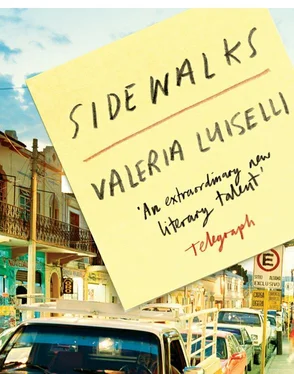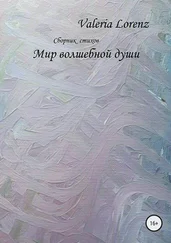Wittgenstein’s metaphor is tempting: but things look very different from where I sit. Here, language and the city are the threshold in which I wait for the next earthquake.
I listen to the workers outside:
What now?
Now we’re going to break up the whole wall — from here to here.
But where do we put the rubble?
We’ll pile it up here. For now.
RELINGOS: THE CARTOGRAPHY OF EMPTY SPACES
Work suspended
On the Paseo de la Reforma, that grand avenue simulating the entrance to an imperial Mexico City that of course no longer exists, there’s a quadrangle of tiny absences, small plazas, where once there were things that are now only gaps. As if the perfect, majestic smile of Madame de la Reforma now lacked a number of teeth. Only God and perhaps Salvador Novo — modernist chronicler of the city — know what was there before the appearance of those empty spaces.
These urban absences, as they might be called, were formed during the extension of the Paseo de la Reforma in the 1960s. The widening of the avenue and the addition of a new stretch were accompanied by the indiscriminate demolition of the buildings in the area. As this new road cut diagonally across the orthogonal layout of the city, some rectangular plots became triangular or trapezoidal. And, since the construction of buildings in these irregular spaces — leftovers from the Paseo — was inconceivable, the asphalt and paving-stone trapezoids and triangles remained like odd pieces of a jigsaw, the origin and purpose of which no one remembers any longer, but which, equally, no one dares to either destroy or use in any permanent way. Nowadays these residual spaces on and around certain corners of Reforma — between the enormous new junctions with the avenues Eje 1 Norte and Hidalgo — are abandoned to the perpetual comings and goings of ambulant street vendors, tourists, delivery men, petty thieves, the homeless, people taking strolls, dust, and debris.
A group of architects from the National University (UNAM), headed by Carlos González Lobo, have christened these spaces “relingos.” I’m not sure where the term comes from, but I imagine it could be related to the realengas of old Castilian, a term that refers to pieces of land not belonging to the Crown, abandoned to disuse. (The strange ups and downs of words: in certain Latin American countries, realenga is now used to talk about an animal with no owner; in others, the word is synonymous with “layabout.”)
I’m also pretty certain that relingo is derived from another similar concept: the terraines vagues of the Catalan architect Ignasi de Solà-Morales. Just like a relingo, the terraine vague is an ambiguous space, a piece of waste ground without defined borders or limiting fences, a species of plot on the margins of metropolitan life, even if it is physically to be found in the very center of a city, at the junction of two main avenues, or under a newly built bridge.
Coming out from Hidalgo metro station at the exit nearest to San Judas Tadeo church, there’s a small triangular plaza, in the middle of which stands a tribute to the work of Mexican journalists: a statue of the nineteenth-century newspaper editor and politician Francisco Zarco surrounded by a large fountain that bubbles and spits out mouthfuls of gray water. The homeless people of the neighborhood go there with their bars of soap and towels to wash their faces and bodies beneath the bronze figure. At certain hours in the afternoon, that same plaza becomes a six-aside football field, and at midday on Sundays it’s transformed again, into the venue for a tertulia for the deaf mutes coming out from the sign language mass at San Judas.
An architect friend of mine, José Amozurrutia, once showed me the plans of a possible building he designed for that relingo. What he envisioned there was a theater that would house the hypothetical San Hipólito Deaf League, and provide a space where the congregation of the sign language mass could indefinitely prolong their Sunday gatherings, silently reading scripts and rehearsing plays. I can’t think of a more brilliantly crazy idea for a relingo than a silent theater that has absolutely no possibility of ever becoming a reality.
Crane in use
Architecture, according to Roland Barthes, should be simultaneously the projection of an impossibility and the putting into practice of a functional order. In his well-known essay on the Eiffel Tower, Barthes recounts that in 1881, not long before the construction of the gigantic antenna, another French architect, Jules Bourdais, had imagined a “sun tower” for the Champ de Mars — at that time a relingo, a sort of playground or tabula rasa for speculative architects. However Bourdais may have conceived his tower, in Barthes’s version — at least in the English-language translation — the structure was to have an enormous “bonfire” that would illuminate the whole city by means of a complex system of mirrors. On the top floor of the tower, crowning the great beacon decorated with wrought iron galleries, there would be a space to which Parisian invalids could ascend for air therapy.
Although Barthes’s description of the sun tower lacks certain important details — for example, one wonders if the mirrors to reflect the light of the giant beacon would be installed around the city or on the tower itself, or how the invalids would get up to the top of the structure and, once there, not scorch themselves — the idea itself is perfect in the Barthesian-architectonic sense: a semifunctional folly. Whatever the case, being incapable myself of imagining things in three dimensions, I find it fascinating to think that a person would stop in the middle of an empty space and conceive there the details of a building full of deaf mutes acting out Macbeth or a tower on whose pinnacle the invalids of Paris would warm their hands on a giant bonfire.
Spaces survive the passage of time in the same way a person survives his death: in the close alliance between the memory and the imagination that others forge around it. They exist as long as we keep thinking of them, imagining in them; as long as we remember them, remember ourselves there, and, above all, as long as we remember what we imagined in them. A relingo — an emptiness, an absence — is a sort of depository for possibilities, a place that can be seized by the imagination and inhabited by our phantom-follies. Cities need those vacant lots, those silent gaps where the mind can wander freely.
No soliciting
I don’t think relingos are necessarily limited to exterior spaces. A few steps from the plaza where the Deaf League rehearses plays in the imagination of a certain architect is the old Miguel Cervantes Library. The building is an empty interior these days, used and reused for different purposes. Two guards stand at the front entrance: one tall and angular with a melancholy expression; the other short, with a pronounced paunch — like unwitting ghosts of Don Quixote and Sancho Panza.
When anyone enters an official-looking building in Mexico, they’re greeted with variations on the questions: “On whose behalf have you come?” “Who asked you to come here?” “Who do you want to see?” To declare that you haven’t come on anyone’s behalf, that no one recommended your visit, that you don’t need to consult any person in particular, that you’re taking a walk, and would like to go inside to take a look at the ceiling — just for the sake of it — seems to disconcert the angels in blue who guard the entrances to these bureaucratic paradises.
One day, after a certain amount of obstinacy on my part, the two guards of the ex-Cervantes library finally allowed me to pass into the ruined interior. Inside, there was not the slightest trace of the volumes that had once resided there — perhaps just a screw clinging to the peeling wall, against which a bookcase had rested. But there was still an air of bookishness: a heavy atmosphere, the stink of squandered ink, of ideas bound in hardback.
Читать дальше












